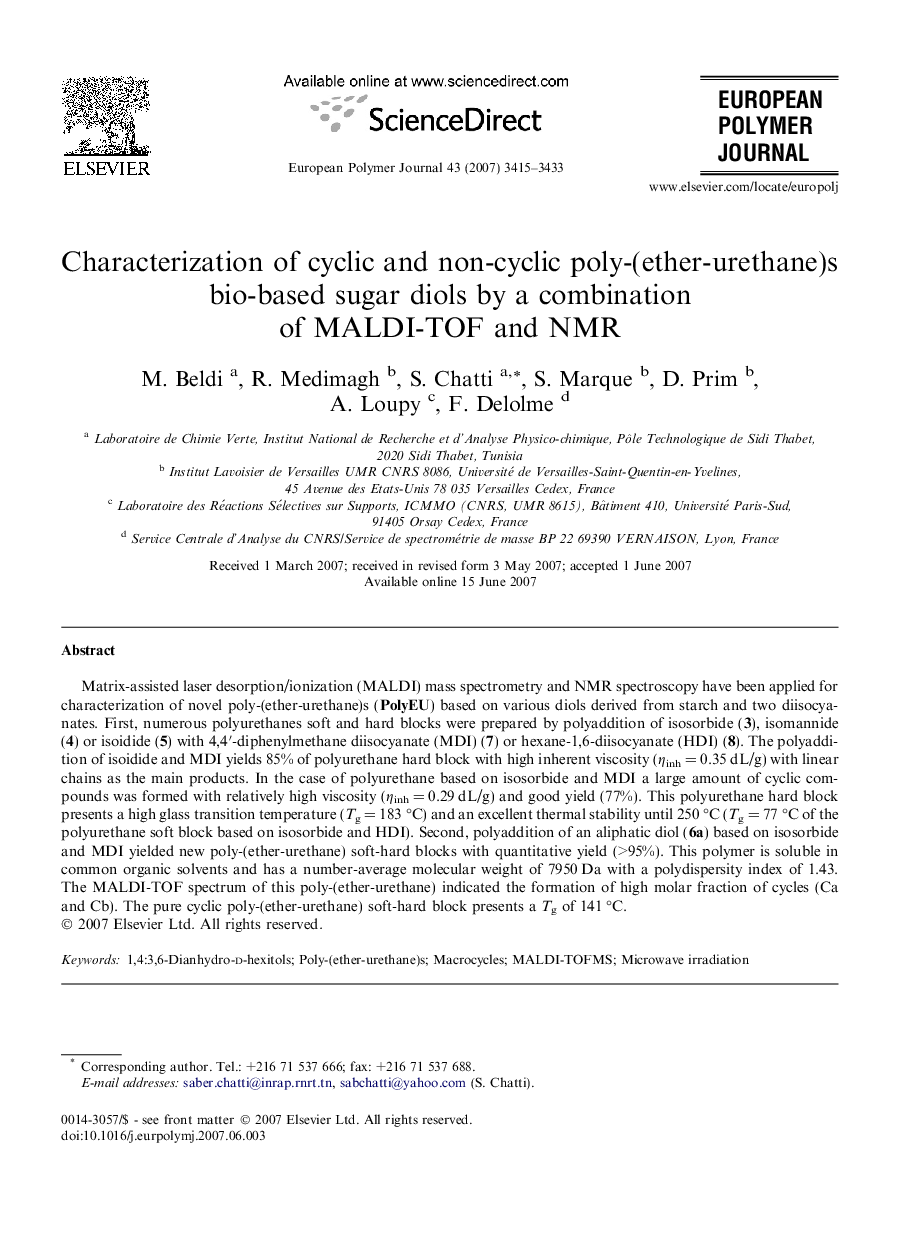| Article ID | Journal | Published Year | Pages | File Type |
|---|---|---|---|---|
| 1403500 | European Polymer Journal | 2007 | 19 Pages |
Abstract
Matrix-assisted laser desorption/ionization (MALDI) mass spectrometry and NMR spectroscopy have been applied for characterization of novel poly-(ether-urethane)s (PolyEU) based on various diols derived from starch and two diisocyanates. First, numerous polyurethanes soft and hard blocks were prepared by polyaddition of isosorbide (3), isomannide (4) or isoidide (5) with 4,4â²-diphenylmethane diisocyanate (MDI) (7) or hexane-1,6-diisocyanate (HDI) (8). The polyaddition of isoidide and MDI yields 85% of polyurethane hard block with high inherent viscosity (ηinh = 0.35 dL/g) with linear chains as the main products. In the case of polyurethane based on isosorbide and MDI a large amount of cyclic compounds was formed with relatively high viscosity (ηinh = 0.29 dL/g) and good yield (77%). This polyurethane hard block presents a high glass transition temperature (Tg = 183 °C) and an excellent thermal stability until 250 °C (Tg = 77 °C of the polyurethane soft block based on isosorbide and HDI). Second, polyaddition of an aliphatic diol (6a) based on isosorbide and MDI yielded new poly-(ether-urethane) soft-hard blocks with quantitative yield (>95%). This polymer is soluble in common organic solvents and has a number-average molecular weight of 7950 Da with a polydispersity index of 1.43. The MALDI-TOF spectrum of this poly-(ether-urethane) indicated the formation of high molar fraction of cycles (Ca and Cb). The pure cyclic poly-(ether-urethane) soft-hard block presents a Tg of 141 °C.
Related Topics
Physical Sciences and Engineering
Chemistry
Organic Chemistry
Authors
M. Beldi, R. Medimagh, S. Chatti, S. Marque, D. Prim, A. Loupy, F. Delolme,
